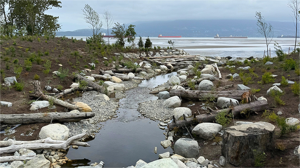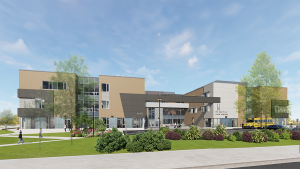Tough energy standards are coming that could throw wrinkles into how buildings are designed and constructed in Canada.
Tough energy standards are coming that could throw wrinkles into how buildings are designed and constructed in Canada.
“In 2010 or 2011 I anticipate that the energy codes will become quite a bit more stringent,” explains Blair McCarry, a project engineer with Stantec Consulting Inc. of Vancouver. EnerGuide 80 for homes and possibly the 2010 version of ASHRAE 90.1 will require 30 percent less energy use than the current energy code model in British Columbia. Other provinces will also be in line for tougher codes.
McCarry is Stantec’s project engineer for a number of high-profile jobs, including Vancouver’s new convention centre and the Olympic Oval.
This September, B.C. introduced a new energy code and although it won’t have a big impact on how buildings are constructed, it is a sign of changing times.
McCarry says stricter energy codes could start a significant design shift away from the current standard “all-air” system model for cooling and heating commercial buildings. More “water-based” systems, similar to systems commonly specified across Europe, could become the new standard.
For pipefitters and insulators, it would mean more piping and in turn more pipe insulation, he says.
While McCarry warns sheet metal contractors that have been doing installations on the cheap should expect a bigger workload with the new B.C. energy code, meeting the code’s requirements “won’t be a stretch” for most contractors in the field.
“As this is the introduction of an energy code in B.C., the (code) officials did not want to rock the boat too much. There will be a couple of years for the contractors, engineers, architects and code officials to get up to speed with the new requirements and procedures.”
In fact, there may be less work for some contractors in the sheet metal industry because architects, engineers and designers are exploring innovative ways of reducing energy requirements (think reduced window size, for instance). Consequently, all-air systems could become smaller.
If water-based cooling/heating systems take off in the next few years, zone systems that only require local office area fan coils to move air, rather than huge central air ducts, could become a standard. “Your sheet metal volume might go down but your insulation thickness might go up,” he points out.
The new B.C. code is based on the ASHRAE 90.1 standard implemented in 2004.
It won’t impact industry contractors in Vancouver and Ontario because both jurisdictions have had energy policies in place that meet the ASHRAE standards.
In other regions and municipalities around B.C. and Canada, however, there are no parallel energy bylaws or codes, points out McCarry.
Basing the code on ASHRAE 90.1 is logical because it updates its standards every three years. However, the B.C. government supports a switch to the Model National Energy Code for Buildings because it will reflect Canadian conditions. It will be implemented in 2012, says Andrew Pape-Salmon, acting director, energy efficiency, of the B.C. government’s Electricity and Alternative Energy Division.
To understand the changes in HVAC designs, check out ASHRAE’s website (www.ashrae.org) for free downloads of several energy design guides including small offices, schools and warehouses.
The guides cover data tables for different climatic regions and examine ways to achieve 30 percent energy reductions over the 2004 code standards.
Contractors that don’t take energy design issues seriously could find themselves with less work down in the next few years. The next ASHRAE design guides will feature data on 50 percent energy reductions and three years later the revised guides will deal with a 77 percent reduction in energy usage, he points out.
Canada is behind the U.S., according to McCarry, where about 40 states and many cities having adopted energy codes that meet ASHRAE 90.1 standards.
New York City has set the highest building energy efficiency standards in North America.
Its ambitious PLANYC 2030 program incorporates a number of green initiatives, including a mandatory energy renovation requirement within 10 years for all buildings over 50,000 square feet.










Recent Comments
comments for this post are closed